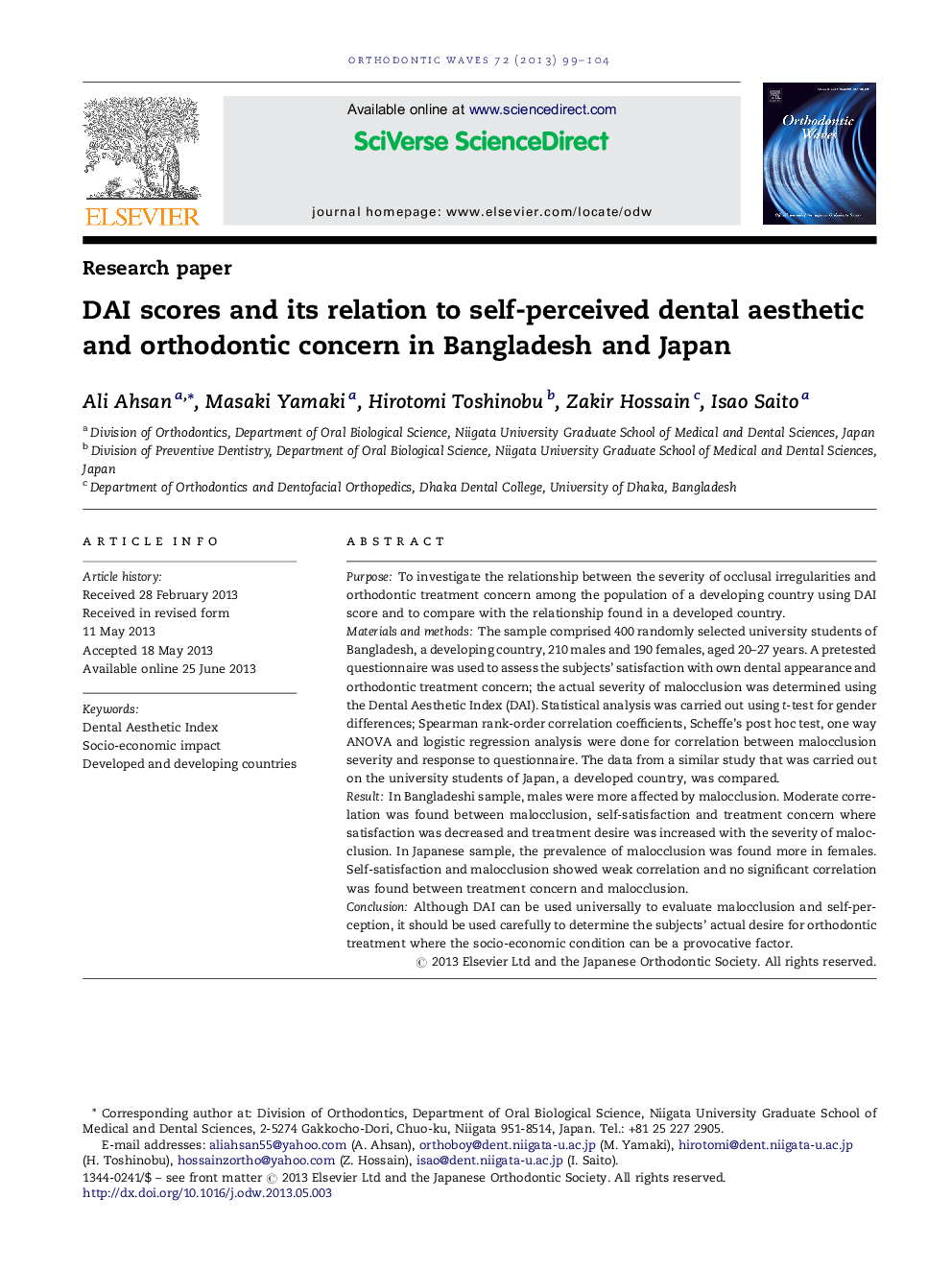| Article ID | Journal | Published Year | Pages | File Type |
|---|---|---|---|---|
| 3170406 | Orthodontic Waves | 2013 | 6 Pages |
PurposeTo investigate the relationship between the severity of occlusal irregularities and orthodontic treatment concern among the population of a developing country using DAI score and to compare with the relationship found in a developed country.Materials and methodsThe sample comprised 400 randomly selected university students of Bangladesh, a developing country, 210 males and 190 females, aged 20–27 years. A pretested questionnaire was used to assess the subjects’ satisfaction with own dental appearance and orthodontic treatment concern; the actual severity of malocclusion was determined using the Dental Aesthetic Index (DAI). Statistical analysis was carried out using t-test for gender differences; Spearman rank-order correlation coefficients, Scheffe's post hoc test, one way ANOVA and logistic regression analysis were done for correlation between malocclusion severity and response to questionnaire. The data from a similar study that was carried out on the university students of Japan, a developed country, was compared.ResultIn Bangladeshi sample, males were more affected by malocclusion. Moderate correlation was found between malocclusion, self-satisfaction and treatment concern where satisfaction was decreased and treatment desire was increased with the severity of malocclusion. In Japanese sample, the prevalence of malocclusion was found more in females. Self-satisfaction and malocclusion showed weak correlation and no significant correlation was found between treatment concern and malocclusion.ConclusionAlthough DAI can be used universally to evaluate malocclusion and self-perception, it should be used carefully to determine the subjects’ actual desire for orthodontic treatment where the socio-economic condition can be a provocative factor.
